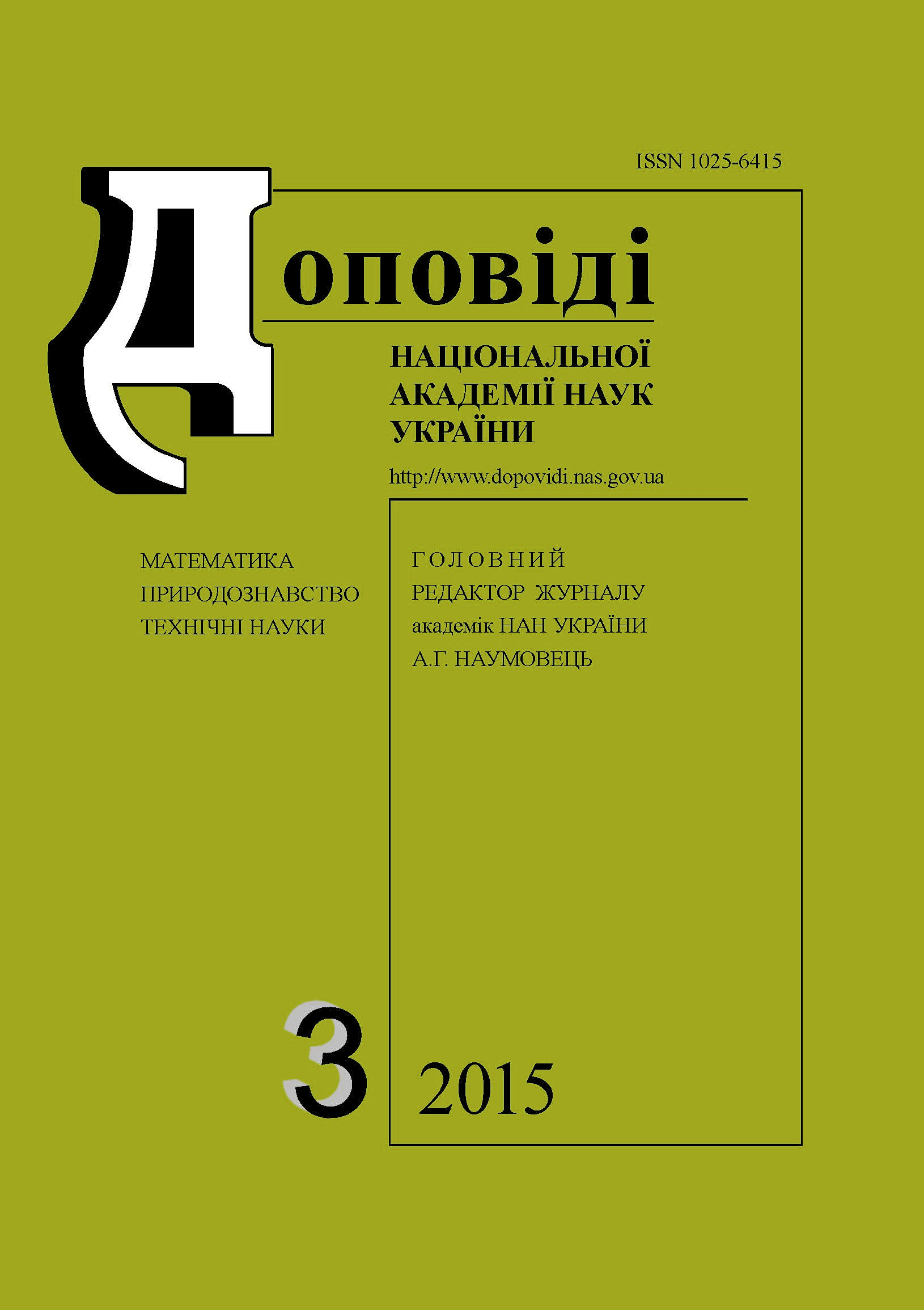Glucose effect on the resistance of mammal erythrocytes to mechanical stress
DOI:
https://doi.org/10.15407/dopovidi2015.03.142Keywords:
erythrocytes, glucose, mammal, mechanical stressAbstract
We have studied the glucose (5%) effect on the resistance of mammal (human, rat, rabbit) erythrocytes to a mechanical stress. Human erythrocytes are shown to be the most sensitive to the glucose treatment, they are characterized by a damage after the incubation with glucose even without exposure to a mechanical stress. However, the pretreatment of rabbit erythrocytes with glucose does not affect the cell sensitivity to a mechanical stress. It is assumed that the different sensitivities to the glucose treatment of erythrocytes of the studied animals are stipulated by the peculiarities of transport characteristics of their membranes in relation to this metabolite.
Downloads
References
Albert S. G. Biochem. Int., 1984, 9, No 1: 93–103.
Resmi H., Pekcetin C., Guner G. Clin. Exp. Med., 2001, 1, No 4: 187–193. https://doi.org/10.1007/s102380100002
Yapislar H., Aydogan S. Arch. Physiol Biochem., 2012, 118, No 5: 265–272. https://doi.org/10.3109/13813455.2012.714790
Riquelmea B., Forestoa P., D’Arrigoa M. et al. J. Biochem. Biophys. Methods., 2005, 62: 131–141. https://doi.org/10.1016/j.jbbm.2004.10.004
Shin S., Ku Y.-H., Suh J.-S., Singh M. Clin. Hemorheol. Microcirc., 2008, 38, No 3: 153–161.
Bogner P., Sipos K., Ludany A. et al. Eur. Biophys. J., 2002, 31, No 2: 145–152. https://doi.org/10.1007/s00249-001-0198-7
Benga G. Eur. Biophys. J., 2013, 42, No 1: 33–46. https://doi.org/10.1007/s00249-012-0868-7
Matei H., Frentescu L., Benga Gh. J. Cell. Mol. Med., 2000, 4, No 4: 270–276. https://doi.org/10.1111/j.1582-4934.2000.tb00126.x
Pat. 52701 UA, IPC G01N-033/48. Method for destruction of erythrocytes, Shpakova N. M., Orlova N. V., Aleksandrova D. I., Publ. 10.09.2010 (in Ukrainian).
Jacquez J. A. Am. J. Physiol., 1984, 246, No 3, pt. 2: R289–298.
Montel-Hagen A., Blanc L., Boyer-Clavel M. et al. Blood., 2008, 112, No 12: 4729–4738. https://doi.org/10.1182/blood-2008-05-159269
Wagner R., Zimmer G., Lacko L. Biochim. Biophys. Acta., 1984, 771, No 1: 99–102. https://doi.org/10.1016/0005-2736(84)90115-9
Guarner V., Alvarez-Buylla R. Diabetes, 1989, 38, No 4: 410–415. https://doi.org/10.2337/diab.38.4.410
Bucala R., Makita Z., Koschinsky T. et al. Proc. Natl. Acad. Sci., 1993, 90, No 14: 6434–6438. https://doi.org/10.1073/pnas.90.14.6434
Resmi H., Akhunlar H., Temiz A. A., Guner G. Cell Biochem. Funct., 2005, 23, No 3: 163–168. https://doi.org/10.1002/cbf.1129
Downloads
Published
How to Cite
Issue
Section
License
Copyright (c) 2025 Reports of the National Academy of Sciences of Ukraine

This work is licensed under a Creative Commons Attribution-NonCommercial 4.0 International License.



